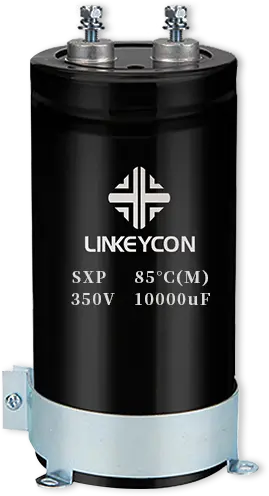Стремитесь к лидерам отрасли по производству конденсаторов с передовыми технологиями и ценами.
How to Test Screw Terminal Electrolytic Capacitors for Your Electronics Project
Introduction: Screw-terminal electrolytic capacitors are indispensable components in modern electronics, playing a pivotal role in power supply smoothing, filtering, and maintaining stable voltages in circuits. As highlighted by industry experts, these capacitors are not just electrical elements but the backbone of reliable electronic systems. Understanding their types, functions, and proper testing protocols is crucial for any electronics enthusiast or professional. This guide delves into the essential aspects of testing these capacitors, ensuring that your electronics projects achieve optimal performance.
What Are Screw-Terminal Electrolytic Capacitors? Screw-terminal electrolytic capacitors are a specific type of electrolytic capacitor characterized by their compact design, compatibility with screw-terminal connections, and high energy storage capabilities. They are widely used in various applications, including power supplies, computer systems, and consumer electronics, due to their ability to handle higher voltages and store large amounts of energy efficiently. These capacitors consist of an anode, cathode, and electrolyte layer sandwiched between aluminum or polymer plates. Their design allows for a relatively small size while delivering significant capacitance values, making them ideal for a wide range of electronic applications.
Understanding the Symptoms of Faulty Screw Terminal Electrolytic Capacitors Faulty capacitors can lead to a variety of issues that disrupt the functionality of electronic circuits. Common symptoms include swelling, leaking, reduced capacitance, voltage spikes, and failure to hold charge. For instance, swelling can cause insulation issues, leading to potential short circuits or arcing. Reduced capacitance might result in voltage fluctuations, affecting the stability of power supplies. Leaking capacitors can cause power loss and overheating, while voltage spikes may damage sensitive components. Recognizing these symptoms is the first step in ensuring the reliability of your electronic projects.

Steps to Test Screw Terminal Electrolytic Capacitors Testing screw-terminal electrolytic capacitors involves a combination of visual inspection, polarity checks, and precise measurements using a multimeter. Begin with a thorough visual inspection to check for physical damage, such as cracks or punctures, which indicate potential failure. Next, verify the polarity by ensuring the capacitor is connected correctly in your circuit. Use a multimeter to measure the capacitance and leakage current. A low capacitance reading or a high leakage current suggests the capacitor may be faulty. Interpreting these results accurately is crucial for determining the extent of the issue and deciding on the appropriate course of action.
Case Studies: Real-World Examples of Screw Terminal Capacitor Testing Real-world examples illustrate the challenges and solutions encountered when testing screw-terminal capacitors. For instance, a student working on a home theater project experienced a malfunctioning capacitor that caused distortion in the audio output. Upon testing, they discovered the capacitor was heavily sulfated, indicating long-term storage issues. By replacing the faulty component, the student achieved optimal audio quality. Another example involves an engineer troubleshooting a portable power bank circuit, where a faulty capacitor led to overheating. Testing revealed a high leakage current, prompting the replacement of the capacitor with a low-leakage variant, thus restoring the device's efficiency.
Comparative Analysis: Screw Terminal Capacitors vs. Other Types of Capacitors When comparing screw-terminal electrolytic capacitors with other types, such as ceramic and film capacitors, several factors come into play. Screw-terminal capacitors generally offer higher capacitance values, making them suitable for applications requiring large energy storage. However, they may not be ideal for high-frequency or pulsed power applications. Ceramic capacitors, on the other hand, are known for their reliability and temperature stability, often used in filter circuits. Film capacitors, such as tantalum capacitors, provide excellent performance in high-frequency applications due to their lower Equivalent Series Resistance (ESR). Each type has its strengths and weaknesses, and the choice depends on the specific requirements of your electronic project.
Practical Tips for Choosing the Right Screw Terminal Electrolytic Capacitors Selecting the appropriate screw-terminal electrolytic capacitor involves considering several factors. First, assess the maximum voltage the capacitor will be subjected to, as this is a critical specification. Next, evaluate the required capacitance value to ensure the component meets the project's demands. Physical dimensions are also important, as they must fit seamlessly into the intended circuit. Additionally, consider the operating temperature range and ensure the capacitor can handle the environmental conditions it will encounter. By addressing these factors, you can choose a capacitor that optimizes performance and reliability for your application.
Troubleshooting Common Issues with Screw Terminal Electrolytic Capacitors Common issues related to screw-terminal capacitors include capacitor aging, polarity mix-up, temperature-induced effects, and electromagnetic interference. Capacitor aging can lead to a gradual reduction in capacitance over time, necessitating periodic testing. To prevent polarity mix-up, ensure that the capacitor is installed in the correct orientation, with the anode connected to the positive terminal of your circuit. Temperature effects can cause capacitors to swell or shrink, so operating within the specified temperature range is essential. Lastly, electromagnetic interference (EMI) can degrade a capacitor's performance, so shielding sensitive components from external noise is crucial. Addressing these issues ensures the longevity and reliability of your electronic projects.
In conclusion, testing screw-terminal electrolytic capacitors is a critical step in ensuring the reliability and efficiency of electronic projects. By understanding their characteristics, symptoms of faults, and proper testing procedures, you can confidently diagnose and resolve issues. Whether through educational case studies, comparative analysis, or practical tips, this guide equips you with the knowledge and skills needed to select, test, and troubleshoot screw-terminal capacitors effectively. By prioritizing testing, you can enhance the performance and longevity of your electronics, ensuring they meet your expectations and functional requirements.
Здание 8&9&12, Фабрика стандартизации электронной информации, зона экономического развития Сусон, провинция Аньхой, П. Р .Китай.
R&Д-центр: Штаб-квартира Дунгуань
Производственный центр: Сусонг, Аньцин, Аньхой





